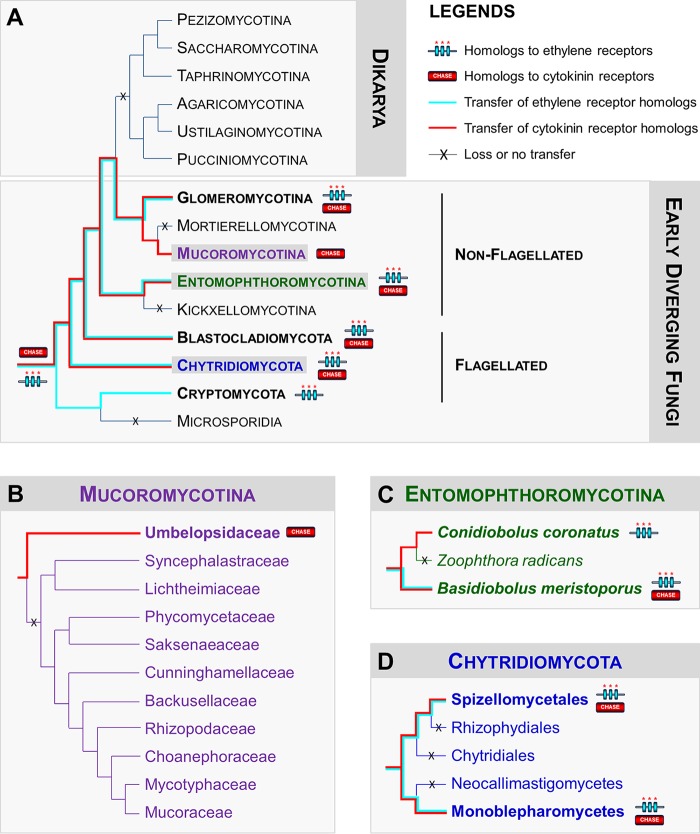FIG 6 .
Distribution of homologs to ethylene and cytokinin receptors in the early diverging fungal lineages. (A) Phylogeny of fungi. Homologs to phytohormone receptors were found in lineages which included flagellated early diverging fungal species (from Chytridiomycota, Blastocladiomycota, and Cryptomycota) and some nonflagellated species, which have been reported to colonize decaying plant material or to behave as symbionts or endophytes of plant roots (from Mucoromycotina, Glomeromycotina, and Entomophthoromycotina) (B) The particular case of Mucoromycotina. Homologs to cytokinin receptors are exclusively present in basal species from the Umbelopsidaceae clade (facultative endophytes of plant roots). (C) The case of Entomophthoromycotina. Homologs to ethylene and cytokinin receptors are detected in the basal lineages (e.g., Basidiobolus and Conidiobolus) that are capable of diverse ecologies, including colonizing decaying plant materials and parasitizing insects. As the lifestyle progresses to a strict reliance on insect parasitism (e.g., Zoophthora), the presence of the homologs is lost. (D) The case of Chytridiomycota. Both homologs to ethylene and cytokinin receptors are detected in species that colonize decaying plant materials (e.g., Gonapodya from Monoblepharomycetes and Spizellomyces from Spizellomycetales), but not in others (e.g., the amphibian pathogenic fungus Batrachochytrium, Rhizophydiales, the saprobe Rhizoclosmatium globosum, Chytridiales, or the mutualistic fungi of herbivore guts, Piromyces and Neocallimastigomycetes). The topologies resemble the current understanding of the relationships of the fungal groups according to information reported in reference (7–9 and 30).

